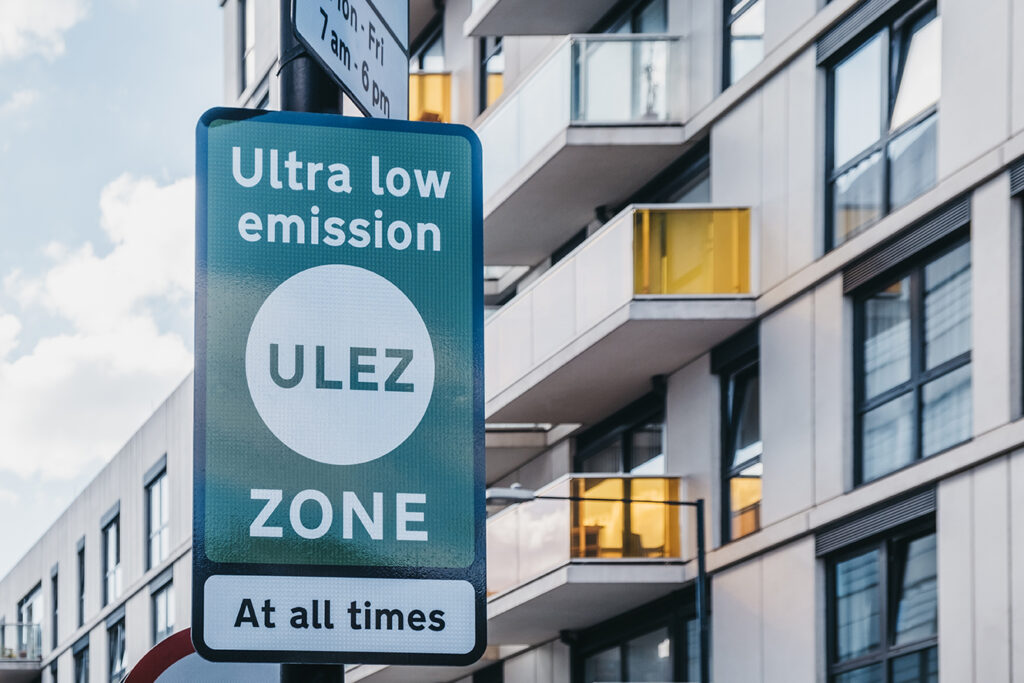London’s expanded Ulez zone seems to be doing what Mayor Khan intended in terms of air quality but are the wider implications for the capital’s citizens also being considered?
London’s Ultra Low Emission Zone (Ulez) has been a hot topic since its expansion on August 29th. With approximately 60,000 motorists facing a daily fee of £12.50 for entering the zone, many are questioning its effectiveness.
Plan Insurance can provide bespoke taxi insurance quotes for all UK drivers. Just fill in our short online questionnaire, and our professional brokers will be in contact to arrange your insurance.
The first month of Ulez
One of the key objectives of Ulez is to reduce the number of vehicles that fail to meet minimum emissions standards on the road.
According to a report published by Transport for London (TfL), during the first month after the expansion, a staggering 93,700 non-compliant vehicles entered the Ulez area on an average day. However, it’s important to note that 36% of these vehicles were exempt from the fee, leaving around 60,000 motorists liable for the daily charge.
This could potentially generate up to £750,000 in revenue for TfL.
These figures indicate that Ulez is deterring a significant number of heavily polluting vehicles from entering London’s streets. To put it into perspective, this 60,000 represents approximately 3% of the total number of vehicles recorded as being driven in London each day. While this may not seem like a massive percentage, it signifies a substantial reduction in harmful vehicle emissions.
Decreased Vehicle Usage
Another promising sign of Ulez’s impact is the reduction in the overall number of vehicles used in the capital. The report reveals that approximately 48,000 fewer vehicles were on the road daily during the Ulez expansion compared to June, representing a 2% reduction.
This decrease could be attributed to a variety of factors, including people opting for alternative modes of transportation or reconsidering their travel plans due to the Ulez charges. While it’s still early to draw definitive conclusions, this reduction in vehicle usage seems to align with Ulez’s goal of improving air quality by reducing traffic congestion and emissions.
Enforcing Ulez regulations has also been a focus. TfL initially sent warning letters to non-compliant motorists but later issued 13,480 fixed-penalty notices between September 26 and 30. These notices carry a fine of £180, which can be reduced to £90 if paid within 14 days.
Is it improving air quality?
Sadiq Khan, the mayor of London, extended the Ulez zone to cover all London boroughs. The emissions standards require petrol cars to have been registered after 2005, while most diesel cars registered after September 2015 are exempt from the charge.
Transport for London reports a positive trend in emissions standards in the expanded area. The proportion of vehicles complying has increased from 85% in May last year to an impressive 95%. This indicates that Ulez is effectively encouraging motorists to upgrade to cleaner vehicles or reconsider using their older, more polluting ones.
Rod Dennis, a spokesman for the RAC, also emphasizes the need to understand whether the reduction in vehicle usage is due to people choosing alternative transportation methods or being unable to travel at all due to non-compliant vehicles.
A growing rebellion against the Ulez expansion fuels a crime wave
In Worcester Park and neighboring boroughs, about 300 cameras, installed just two months ago to enforce the £12.50 charge for non-compliant vehicles, have become targets for vandals.
Frustration runs deep, with many locals unable to afford the Ulez charge, especially elderly residents who use their cars sparingly for essential tasks. The vandals, known as “bladerunners,” operate covertly and use tools like angle-grinders to disable the cameras. Social media posts warn of new camera locations and even suggest individuals willing to pay £40 for cutting camera cables.
Between April 1 and September 30, 795 crimes related to Ulez cameras were recorded, including damaged and stolen cameras. TfL condemns the vandalism but reaffirms its commitment to maintaining and replacing them.
People and businesses are being hit hard
Edmund King, president of the AA, raises an essential point. He states that while targeting the most polluting vehicles is beneficial for air quality, we need to assess how the expansion of Ulez has affected families on low incomes who may struggle to afford compliant vehicles or purchase new ones.
Local business owners, like Jack Coles of DG Coles & Son building supplies, have been hit hard. He’s had to scrap non-compliant diesel vans and pay the Ulez charge on a third until he can afford a compliant replacement. He reflects the sentiment of many: “A lot of people around here are old and can’t afford it.”
The resistance isn’t limited to vandals, the anti-Ulez Facebook group has over 40,000 members.
Conclusion
The early data and reports suggest that Ulez is making positive strides in its mission to reduce polluting vehicles and improve air quality in London. The significant reduction in non-compliant vehicles on the road, increased compliance with emissions standards, and decreased overall vehicle usage are all promising signs.
However, it’s essential to continue monitoring the situation and address concerns raised by those who may be disproportionately affected by Ulez charges.


